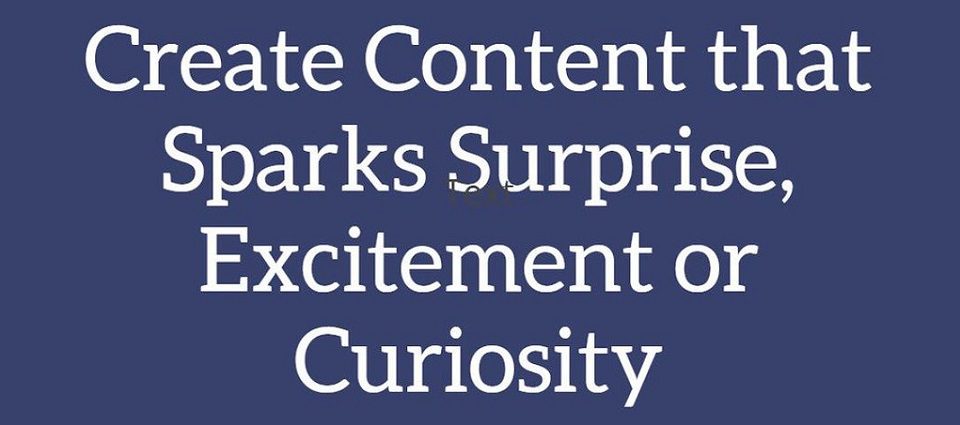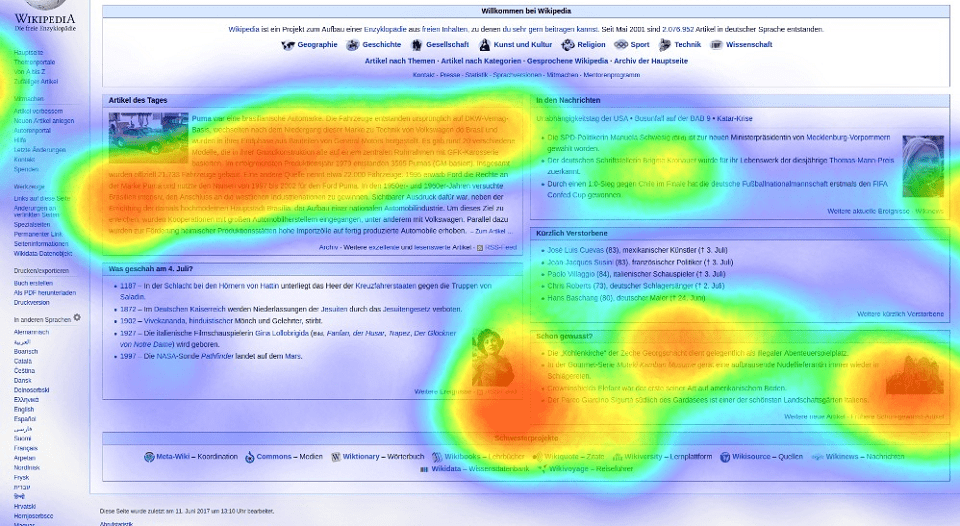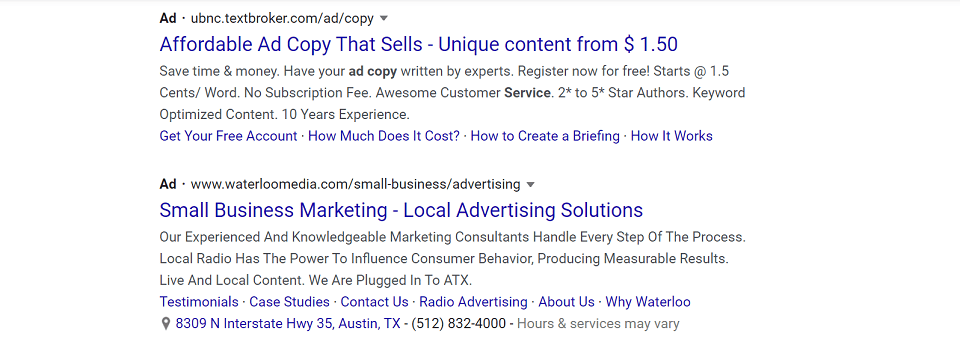For many, it’s either pay per click (PPC) advertising or content marketing. Rarely do marketers consider mixing these together.
But, let me tell you, it works better if you find a clever way to combine them. Mixing the two can help scale a business more effectively than either of them can alone.
PPC marketing is one of the most popular methods used by marketers to help ventures of all sizes grow.
Almost 80% of businesses that use PPC benefit by experiencing sensitive growth.
But according to the same sources, these campaigns have better results when combined with content marketing.
With all this information in mind, let’s see how you can successfully mix the two and make the most of the combination.
#1. Audience Segmentation
No marketing or advertising campaign should start without audience segmentation.
This will help you figure out the likes and dislikes of your audience, and what makes each of them more likely to purchase from a certain establishment.
Audience segmentation sounds complicated, and for many, it’s a daunting task. But let’s make that easier for you. You have two types of audience:
- Site visitors
- Converted visitors
To turn site visitors into converted visitors, you have to design a marketing campaign capable of delivering such results.
Of course, you will have to exclude converted visitors from these PPC ad campaigns and make these visible only for visitors.
But, to take things up a notch and design a more sophisticated campaign, consider the following audience categories.
- Site visitors
- Engaged website visitors
- Members of your loyalty program (if necessary)
- Shopping cart abandoners
- Users who buy three or more times a year
- Recent converters
- Users in a free trial
- Users who share your CONTENT
- Discount shoppers
- Users who haven’t made a purchase in a year or more
- Users who have abandoned your free trial program
This may be the most extensive and complex audience segmentation pattern possible to help you create a more effective blend between PPC and content marketing campaigns.
Ultimately, both your PPC ads and website content will look different for each of your clients.
This will make it more likely you’ll get a positive response from a larger number of visitors, even for those from different categories!
#2. Make Your Visitors Trust You
Now, that you have your audience’s attention, you have to make them trust your brand.
So, here’s the thing: PPC helps you bring more visitors to your website. Without impeccable content, they’re unlikely to remain there.
This data from Statista shows that most of Google’s and Facebook’s total revenue comes from digital ads.
How seriously businesses take PPC advertising is now more obvious.
But to make the money you invest in PPC worth spending, you have to keep those visitors on your website with well-written, informative, and engaging content.
Basically, it doesn’t matter how many people land on your website if their next impulse is leaving it.
So, make sure you craft some informative, high-quality, and high-authority content. This will give visitors a reason to stay on your site for longer and may might even convince them to buy from you.
But more on how to craft that information-packed content, a little later.
#3. Boost Search Engine Visibility
SEO, in terms of PPC and content marketing, still matters.
When it comes to PPC, search engine optimization will help you craft keyword-packed ads, headings, meta descriptions, and more.
SEO-orientation will help you optimize content, create a more professional look, make good use of your content and PPC budget. And this, because of a series of reasons:
- SEO generates the highest conversion rates
- SEO-backed PPC is more likely to generate leads
- Users still get their information online and use keywords and key phrases in their searches.
So, making both your content and PPC campaigns more visible for search engines is the best way to scale your business and maximize the ROI on your ad dollars.
Use the tips below to improve your SEO efforts.
- Have an SEO audit
- Ensure your website is mobile-friendly
- Use long-tail and/or semantic keywords that align with your target location
- Use the same type of keywords that are relevant for a certain timeframe
- Spy on your competition’s keywords
#4. Impeccable Content
Now that visitors are at your doorstep, thanks to those PPC ads, let’s see what you should pay attention to when crafting that witty content on your website.
Your content is what will generate higher conversion rates, so pay attention to it.
Make sure to use industry-specific keywords, but use them in a natural fashion. Apart from finding engaging, entertaining topics to keep your readers glued to their screens, you should aim for grammar and error-free content.
Grammatical errors are a huge turn off for people who want to trust the brands they buy from. And nothing screams unprofessional more than spelling and grammar errors.
This may be an issue for non-native writers, but also for those who work under pressure a lot.
If you want to ensure all your copy is error-free, consider editing and proofreading tools and services.
Grammarly is one of the most popular grammar editors out there, and there are multiple other options as well if you are not a fan of this one.
Have professionals look over your content for proofreading purposes. A fresh eye always helps catch errors that you, as the writer, may miss.
Alternatively, you may benefit from the following tools and apps:
- Studicus – this is a proof-reading service all content writers should try. With a smooth design and around-the-clock customer service, this platform is able to meet even urgent demands. Save some of your precious time and try the smart solutions the market has for you.
- ProWritingAid – use this tool to check how readable, grammatically correct and non-spammy your content is. But don’t take everything for granted. The app is not friendly with complex phrases and expressions. Sometimes, it might suggest over-simplifying your content, which is not always beneficial.
- SEMRush’s Title Generator – this impressive tool will help you make better use of your SEO keywords and improve your page titles. The tool is easy to use and all you have to do is to type in the search bar the topic you’re targeting. Next, you’ll be provided with up to five suggested titles on the topic.
#5. Follow-Up
When targeting prospects with pay per click ads, take special care that the landing page you send them to matches what is advertised in the ad.
For instance, if the ad is for impressive sales and discounts, and no discounts are available on the landing page, you’ll lose all that credibility and trust you have earned through information-packed, researched, and well-written content.
No matter what you advertise in your PPC campaigns, make sure the landing pages reflect the offer and brand promise you suggested in the ad text or display ad.
Final Thoughts
In spite of what many marketers think, PPC and content marketing really do go hand-in-hand.
So make sure you align your efforts across all three areas, from PPC to SEO to the content itself. A seamless combination of the three will serve to improve your engagement metrics, and ultimately, your conversion rates.
Feature Image Credit: CC 0; Public Domain. Feature image sourced from Flickr.
Disclaimer: The views and opinions stated in this post are that of the author, and Return On Now may or may not agree with any or all of the commentary.
Bridgette Hernandez
Latest posts by Bridgette Hernandez (see all)
- How to Combine Content Marketing With PPC - September 24, 2019
- 5 Ways to Create Content That Boosts Your Local Search Rankings - April 9, 2019





